If you are part of a marching band at your high school, you will likely travel to attend competitions in your district, state, or across the US on Saturdays to attend and participate in marching band competitions.
At these competitions, your band will perform your halftime show in full for several professional judges who will watch your performance from a press box and on the field, moving with your band.
At the end of the competition, all participating bands will attend an award ceremony where the top three bands with the highest scores will be awarded trophies, or each band will receive a ranking based on their scores.
While halftime performances and school pep rallies constitute a significant part of being in a marching band, competitions are the other aspect of what makes marching season so much fun!
All marching band competitions are judged on three significant factors: Music Performance, Marching and Maneuvering (M&M), and General Effect (GE). It is important to note that not all marching band competitions judge bands based on the same factors, but these are the primary points of judgment. Drill or props are one part of a marching band show, and the music and coordination of the band members are another significant part of a show.
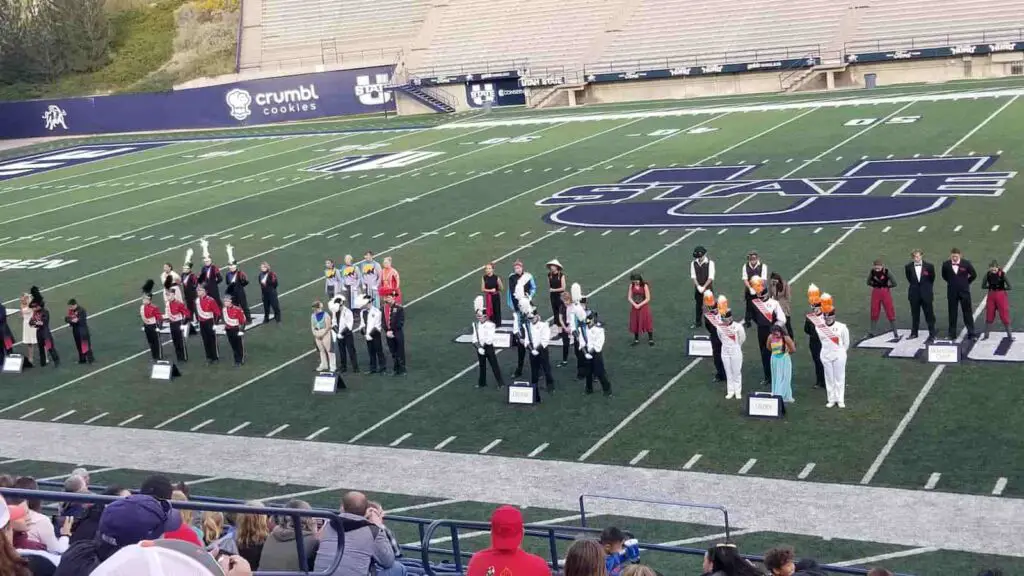
This article will help you understand what judges are assessing when your band performs in competitions. This article explains the different scoring sheets/categories used by the Bands of America marching band competition circuit.
We will be discussing BOA scoring guidelines simply because it is a national marching band competition, and bands from any state can sign up to compete.
What Are Marching Bands Judged On?
Marching bands are judged on several different factors, including music performance, visual performance, visual general effect, and musical general effect.
What is important to note is that the specific terminology, weight, and even the number of judges evaluating each factor varies by competition, state, county, and music association.
Not all competitions judge bands on the same criteria. Still, any competition your school attends will have a handbook or sample score sheets available online to review in preparation for competition if that is something you wish to do.
This article will use information and adjudication regulations set forth by the Bands of America (BOA) competition circuit.
Note: Bands of America is a part of Music for All, a not-for-profit educational organization focusing on “creating, providing, and expanding positively life-changing experiences through music for all.” BOA is one of the largest national marching band competition circuits in which any high school marching band can compete.
BOA judges the band’s field performances on the following factors:
Music Performance (Individual)
Visual Performance (Individual)
BOA asks judges to assess the band’s performance in each scoring area based on a numerical range based on how frequently the band achieves elements listed on each score sheet. This scoring range is as follows:
| 0-10 points | Rarely |
| 11-30 points | Infrequently |
| 31-70 points | Sometimes |
| 71-90 points | Usually |
| 91-100 points | Always |
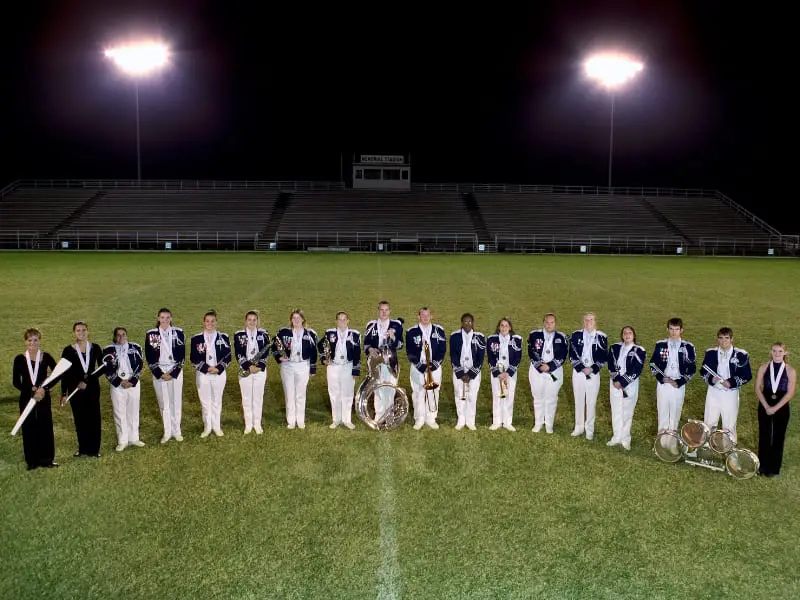
Scoring Breakdowns for BOA
Music Performance Individual
For this scoring element, a judge will evaluate the band’s performance accuracy, tone quality and intonation, and the “realized musical demand placed on performers.”
The Music Performance Individual score is divided into two main categories:
Tone Quality/Intonation and Accuracy/Technique, with each category worth a maximum total of 100 points.
When evaluating Tone Quality/Intonation, judges are asked to assess “to what degree do the performers demonstrate:”
- A solid fundamental approach to quality of sound and tone production in all ranges and dynamics?
- An awareness of, and attention to, intonation in all ranges and dynamic levels?
- Quality and consistency of sound?
- Mastery of simultaneous responsibilities
When evaluating Accuracy/ Technique, judges are asked to assess “to what degree do the performers demonstrate:”
- Articulation, enunciation, and release with clarity, focus, and uniformity?
- The ability to uniformly and accurately play rhythms and maintain pulse control at all tempi required.
- Accuracy, uniformity, and flexibility with the technical skills being demanded?
- Appropriate touch – weight of stroke and musical colors created?
- Quality in accessory technique/movement?
- Mastery of simultaneous responsibilities?
Music Performance Individual
| Tone Quality/Intonation | Accuracy/Technique |
| Consistent Tone Quality Consistent Tuning and Intonation ControlCharacteristic Instrument Sound Quality and Focus Musical, Environmental, and Physical Challenges | Accurate Articulation MethodologyTonal CenterRhythmic Accuracy and ConsistencyClarity and Uniformity of Dexterity ControlSimultaneous Responsibilities |
| SCORE | SCORE |
| __ /100 | __ /100 |
| TOTAL Max Score: 200 |
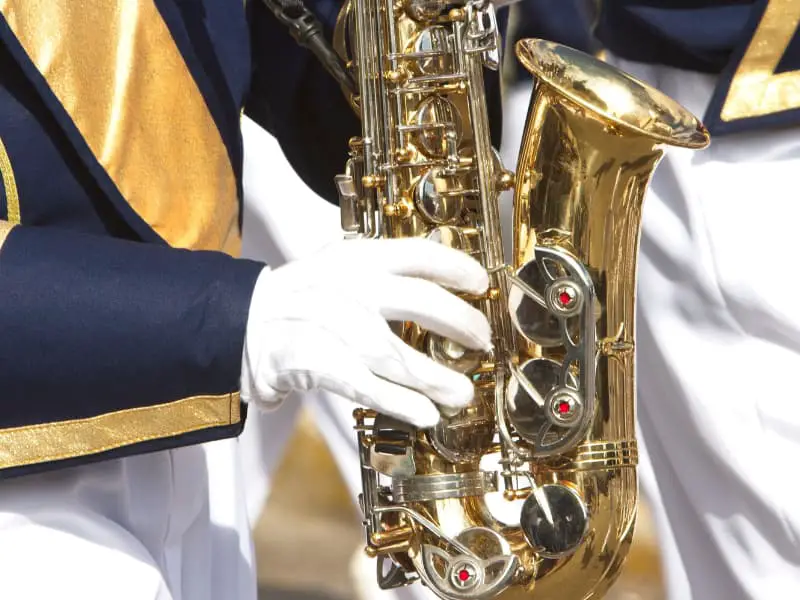
Music Performance Ensemble
The purpose of this scoring factor is “to determine the best, second best, etc. musical performance based on accuracy and uniformity of performance as perceived from the vantage point of the audience.
The judgment of technical accuracy, intonation accuracy, and tone quality is to be made with the consideration of content – that is, demand and exposure of the performers. The effectiveness of the production is not to be considered.” The Music Performance Ensemble category is evaluated based on two sub-captions.
Overall Sound Quality/Accuracy
The first sub-caption is Overall Sound Quality/Accuracy, which evaluates how “closely the ensemble has achieved proper tone production. The result is obtained when the three major aspects of intonation, focus, and timbre are properly utilized by segments contributing to the sonority of the total ensemble.
Note: Consideration is also given to the appropriate dynamic contribution of the sections, choirs, and voices to the total ensemble.” This sub-caption is worth a total of 100 points.
When evaluating Overall Sound Quality/Accuracy, judges are asked to assess “to what degree do the performers demonstrate:”
- Consistently playing in tune?
- A beautiful tone quality?
- Consistent quality sonority with entire musical ensemble throughout form changes, musical performance demands, and musical construction?
- A variety of spatial environments throughout the show?
- Handling of voice proximity which places demands on players relative to the total ensemble pitch timbre, consistency, and texture?
- Exposure of all voices through balance? Textural clarity?
- Consistency in timbre, blend, intonation, stylistic uniformity, and sonority through spatial changes and technical demands?
- Consistently playing in time?
- Rhythmic accuracy and variety?
- Mastery of the metric demands placed on the players – variety, speed, layered?
- Attention listening center changes throughout the show? Production?
- Mastery of simultaneous responsibilities?
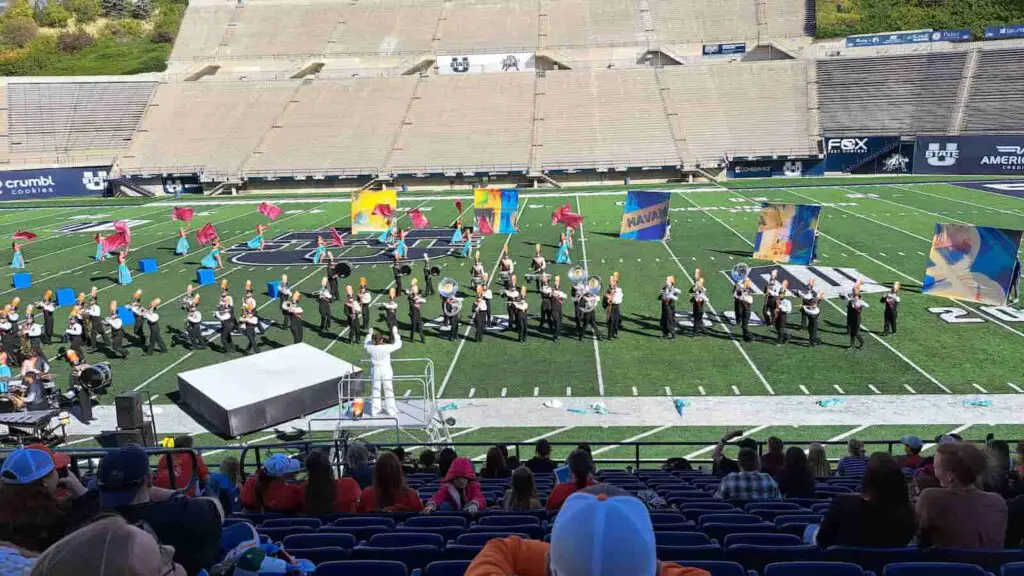
Musical Artistry
The second sub-caption is Musical Artistry which “evaluates the overall achievement of the music ensemble relative to musicality. Consideration is given for the level of musical achievement displayed through appropriate demonstration of expressions, dynamics, phrasing, and correct idiomatic interpretation.”
When evaluating Musical Artistry, judges are asked to assess “to what degree do the performers demonstrate:”
- Musical expression, which includes shape, natural inflection, and weight within the musical phrase – horizontally, harmonically?
- Relating phrases, segments, sequences, transitions, and developments expressively?
- Musical texture and dynamics to communicate expression?
- Mastery of demands required of the performers relative to style, idiom, dexterity, embouchure, touch, or articulation?
- Utilization of all voices to support the expressive qualities of the music?
- Mastery of simultaneous responsibilities?
Music Performance Ensemble
| Overall Sound Quality/Accuracy | Musical Artistry |
| Ensemble Sonority, Intonation, and Tuning Balance and BlendTonal Center and Focus Clear and Appropriate MethodologyVertical Alignment and Rhythmic InterpretationMusical, Environmental, and Physical Challenges | Full Range of Expression, Detail, and NuancePhrasing and Musical InflectionClarity and Uniformity of Style and Interpretation Range of Musical DevicesExpressive Qualities of the Music by All ElementsSimultaneous Responsibilities |
| SCORE | SCORE |
| __ /100 | __ /100 |
| TOTAL Max Score: 200 |
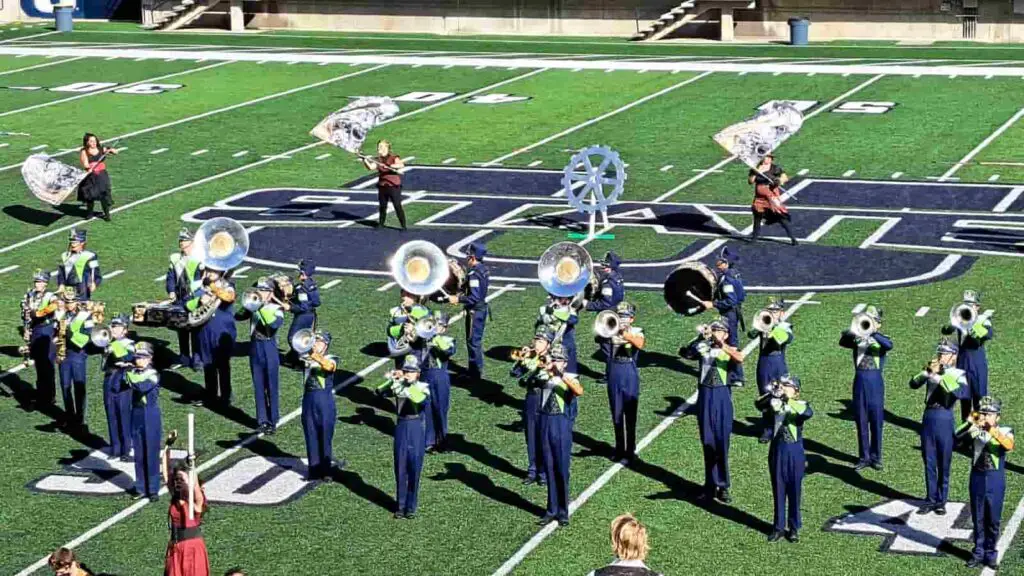
General Effect Music
BOA judges scoring General Effect Music for the competition are looking to assess the band on what is being performed, as well as how it is performed.
This category aims to assess which group best represents the most effective, second most effective, etc., musical program.
Note: Effectiveness of the Musical Repertoire and Effectiveness of the Musical Performance are the two sub-captions for this category. Each sub-caption is worth a total of 100 points.
Effectiveness of the Musical Repertoire
When evaluating the Effectiveness of the Musical Repertoire, judges are responsible for crediting the effectiveness of “the written musical programs as presented by the performers.
This sub-caption emphasizes the design team’s contribution to the program’s success as performed by the students. When evaluating the Effectiveness of the Musical Repertoire, judges are asked to assess “to what degree do the performers demonstrate:”
- Creativity and imagination in the use of something familiar in a new way?
- Originality in the use of something fresh and new?
- Success in musical staging in both placement and in time?
- Strength of coordination among all the musical elements?
- Strength of coordination between the music and the visual?
- Interpretive and expressive elements used to enhance effect?
- Success in musical pacing over the complete programs and over each production?
- Elevation of the musical repertoire through the performers?
- Overall effect of the program through its entertainment value?
- Development, connection, and evolution of planned events?
- Strength of the aesthetic, intellectual, and emotional facets of the musical repertoire?
- Variety of effects?
Effectiveness of the Musical Performance
When evaluating the Effectiveness of the Musical Performance, judges are responsible for crediting the level at which the performers demonstrate their emotional involvement and understanding of the musical program. This sub-caption reflects the contributions of the performers.
When evaluating the Effectiveness of the Musical Performance, judges are asked to assess “to what degree do the performers demonstrate:”
- Communication of the musical program intent?
- Engagement through an emotional performance?
- Precision as a contribution to effect?
- Musical artistry as an influence effect?
- Communication of the expressive qualities inherent in the program?
- Sustained confidence and understanding of the musical program?
General Effect Music
| Effectiveness of the Musical Repertoire | Effectiveness of the Musical Performance |
| Creativity and ImaginationCoordination and Staging of ElementsUse of Time and Pacing of EffectsAppropriate Range of ExpressionsContinuity and Flow of musical ideasContribution for Enrichment/Enhancement of All Elements | Communication of Musical IntentEmotionProfessionalism ArtistryInvolvement |
| SCORE | SCORE |
| __ /100 | __ /100 |
| TOTAL Max Score: 200 |
Visual Performance Individual
The purpose of the Visual Performance Individual score is to “reward the achievement of the individual performers on the one hand and to indicate the problems of the individual performers on the other hand. This score comprises two sub-captions, Challenges and Skills and Accuracy, and Definition.
Challenges and Skills
When evaluating Challenges and Skills, judges are asked to assess “to what degree do the performers demonstrate:”
- High-quality depth of Body, Form, and equipment responsibilities?
- A variety and range of skills?
- The principles of movement?
- Alignment and spacing challenges?
- Range in effort changes?
- Training and style?
- Tempo, rhythmic variations, or phrases without tempo and pulse?
- Simultaneous responsibilities?
Accuracy and Definition
When evaluating Accuracy and Definition, judges are asked to assess “to what degree do the performers demonstrate:”
- Control of form, body, and equipment?
- Poise in movement and equipment?
- Variety, range, and uniformity in technique?
- Quality technique in handling equipment?
- Control of Tempo and pulse through a variety of settings?
- Detail, nuance, and training in individual technique?
- A clearly defined style?
- Training in both mental and physical recovery?
- Mastery of simultaneous responsibilities?
Visual Performance Individual
| Challenges and Skills | Accuracy and Definition |
| Form, Body, and Equipment ChallengesVariety and Range of SkillsTempo and Pulse Variety of TechniquesSimultaneous Responsibilities | Control of Form, Body, and EquipmentDemonstration of Variety and Range of SkillsControl of Tempo and Pulse Demonstration of Training and Style Recovery |
| SCORE | SCORE |
| __ /100 | __ /100 |
| TOTAL Max Score: 200 |
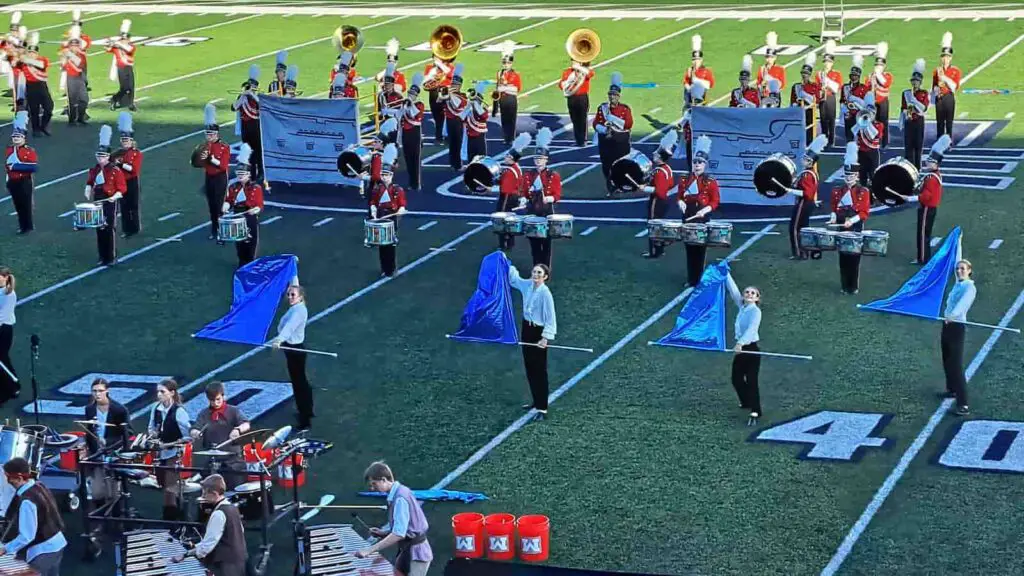
Visual Performance Ensemble
The purpose of the Visual Performance Ensemble score sheet is to “determine the most technically proficient marching groups from the vantage point of the audience.
The evaluation is composed of excellence identification, balanced with the judgment of technical demand, and the exposure to that demand on the ensemble, with the consideration of content and construction.”
This category comprises two sub-captions: Visual Artistry and Excellence and Technique. Each sub-caption is worth a total of 100 points.
Visual Artistry
Visual Artistry involves discussing and analyzing the breadth and depth of the student portrayal of a program, not the effect.
This sub-caption “does not question the quantity of material and presentation, but a question of care, refinement, and details used by the design team on the arrangement of the program. When evaluating Visual Artistry, judges are asked to assess “to what degree do the performers demonstrate:”
- Visual expression?
- Quality in vertical and horizontal phrasing?
- Logic, depth, and variety in the use of design elements?
- Exploration of a wide range of skills?
- Detail and nuance in the performance?
- Integration of all the parts in a complementary manner?
- Musicality in form, body, and equipment?
- Simultaneous responsibilities?
Excellence and Technique
Excellence and Technique involve “the quality of body carriage/control, equipment usage/technical accuracy, and the ability of the ensemble to project those elements of the chosen style.
Additionally, this sub-caption considers the ability of a group to maintain overall clarity and accuracy while changing or maintaining primary, secondary, tertiary, etc., focal points.
“Student-to-student form relations and the timing and continuity of the entire visual presentation should be evaluated.” When evaluating Excellence and Technique, judges are asked to assess “to what degree do the performers demonstrate:”
- Response to changes in space, time, and form?
- Control of tempo, pulse, and rhythm?
- Quality and Uniformity of technique?
- Form control and balance?
- Overall achievement in ensemble form, body, and equipment?
- Clarity and readability, and projection of style?
- Quality of form, body, and equipment work as it relates to orientation and timing?
- Mastery of simultaneous responsibilities?
Visual Performance Ensemble
| Visual Artistry | Excellence and Technique |
| Quality use of the Elements of DesignVisual MusicalityUnityRange and Variety of SkillsArtistic ExpressionIntegration Simultaneous Responsibilities | Control and Balance of FormEnsemble CohesivenessPrecision, Uniformity, and TimingTechnique in Form, Body, and Equipment/RecoveryProjection of StyleAchievement of Effort Changes |
| SCORE | SCORE |
| __ /100 | __ /100 |
| TOTAL Max Score: 200 |
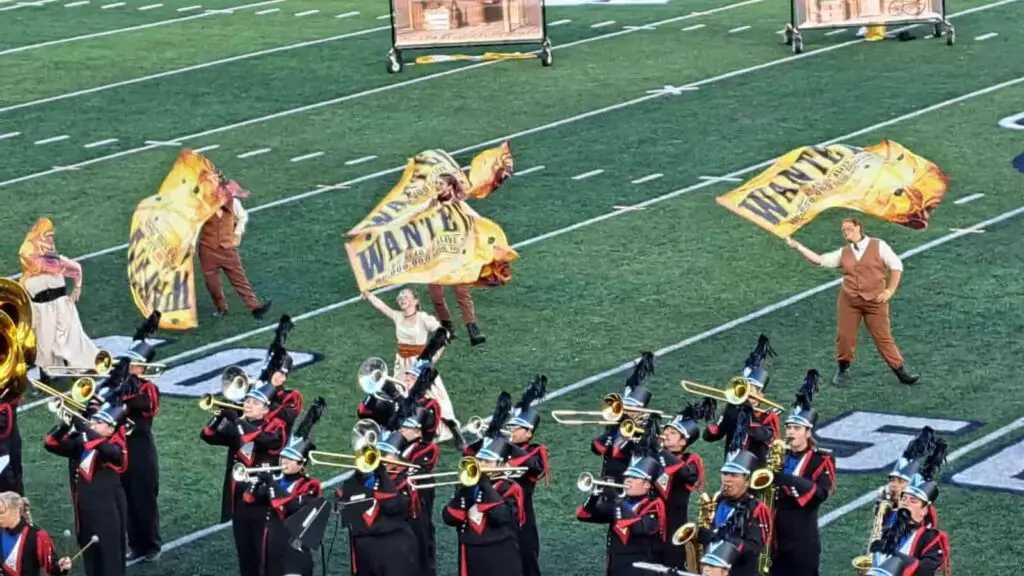
General Effect Visual
The purpose of the General Effect Visual score category is to assess the “utilization of all elements to bring about maximum effectiveness of the visual representation of the musical performance.
The goal of this category is to decide which band collectively presents the most effective (and second most effective, etc.) visual representation of the musical program.
The band is judged based on which group has the best balance of the two sub-captions: Effectiveness of the Visual Repertoire and Effectiveness of the Visual Performance.
Effectiveness of the Visual Repertoire
The Effectiveness of the Visual Repertoire sub-caption places more of an emphasis on the design team’s contribution to the success of the program as performed by the students. When evaluating this sub-caption, judges are asked to assess “to what degree does the band demonstrate:”
- Interpretation and enhancement of the music
- Strength of coordination among all the visual elements?
- Strength of coordination between the music and the visual?
- Staging success in both placement and time?
- Pacing success over the complete program and over each production?
- Creativity and imagination in the use of something familiar in a new way?
- Originality in the use of something fresh and new?
- Effectiveness in incorporating form, body, and equipment into the design?
- A sense of continuity developed in the program?
- Overall effect of the program through its entertainment value?
- Strength of the aesthetic, intellectual, and emotional facets of the design?
- Variety of effects?
Effectiveness of the Visual Performance
The Effectiveness of the Visual PErformance sub-caption reflects primarily on the contribution of the performers. When evaluating this sub-caption, judges are asked to assess “to what degree do the performers demonstrate:”
- Their role and identity?
- Engagement through an emotional performance?
- Precision as an influence of effect?
- Success in elevating the written program?
- Sustained confidence and understanding of the program intent?
- Communication of the intent of the program?
General Effect Visual
| Effectiveness of the Visual Repertoire | Effectiveness of the Visual Performance |
| Interpretation and Enhancement of the MusicCoordination and Staging of ElementsPacing of Effects Creativity/Imagination/OriginalityUse of Audio-Visual Balance/Blend/FocusContinuity and flow of visual Ideas Effective Use of Movement/Form/Color | Communication of RolesEmotionProfessionalismArtistryInvolvement |
| SCORE | SCORE |
| __ /100 | __ /100 |
| TOTAL Max Score: 200 |
Marching Band Competition Judging FAQ:
Is There a Different Scoring Between High School and College?
Yes, there is a difference between high school and college marching band competitions. The largest difference is that in college, the marching band does not attend competitions on the weekends during marching season like you do while in high school.
While high school football games are on Friday nights, leaving the weekend free to travel across the state/country to attend and participate in marching band competitions, college football games are on Saturday at any time during the day or evening. Some college football games can have a kick-off time of noon, three pm, six pm, or later.
When there is a day game, most college marching bands will wake up early to meet at the practice field to run through the week’s halftime show as well as a full run-through of the pregame show. Many college and university marching bands will also put on a skull session show before the entire band marches over to the stadium to begin the game.
When in a college marching band, your entire Saturday is spent preparing for the football game or working out logistics for traveling and pep band performances if the band has traveled to an away football game. There is no time to participate in a standard marching band competition.
Note: However, you may see a college or university band at a high school marching band competition, but they are not competing. A college marching band may perform at a local competition as part of an exhibition, a performance without scoring more for entertainment and promotional purposes than for points or ratings.
Marching band competitions are unique to high school marching programs and your final competition as a Senior will normally be your final marching band competition ever. Unless you are a member of a DCI marching band, these bands compete across the country during the summers, and the members of the band range in age from 13/14 to 21/22 years old depending on the individual corps cut-off dates for members.
What is a Good Marching Band Score?
A good marching band score is a Superior rating. If you have been a member of a concert, symphonic, or orchestra band in school, you will have performed at Music Performance Assessment competitions or Solo & Ensemble competitions.
In these concert/ “sit-down-band” competitions, the band will be given a ranking of Superior, which is the highest rating (i.e., first place), Excellent which is the second highest rating, Good which is the third highest rating, Fair which is the second lowest rating, or Poor which is the lowest rating a soloist/ensemble/band can be given in competitions.
It should be noted not all marching band competitions use the same titles for their scores. With Bands of America, winners are announced based on scores out of 100 overall points.
The bands will all receive an overall rating, but the “winner” will be the band with the highest overall score when all of the scoring elements (Music Performance (Individual), Music Performance (Ensemble), General Effect Music, Visual Performance (Individual), Visual Performance (Ensemble), Visual General Effect) are averaged to the organizations pre-set values.
Visual Performance scores are averaged to a possible 20 points. Music and Visual averages are added to the General Effect Musical total (40 points) and General Effect Visual score (20 points) for a final total of 100 points.
What is the Highest Marching Band Score Ever?
Since not all marching band competitions judge bands on the same criteria or use the same scoring metrics, it is impossible to determine what the highest marching band score in history is. That being said, because we discuss Bands of America in this article, the highest BOA score ever was a score of 97.75 which was earned by Avon High School from Avon, Indiana at the 2008 Bands of America Grand National Championship Finals.
How is Marching Band Class Determined?
When competing, competitions will classify bands attending by either how many students attend the high school the band represents or how many performers are on the field at the time of competition. Bands are assigned classes in order for all bands to have an equal opportunity to compete against similar bands. For Bands of America competitions, bands are assigned a competitive class based on their school’s enrollment (grades 10-12). Here is how BOA determines their classes:
| Class | # of Students Enrolled at the High School |
| A | 600 or fewer students |
| AA | 601-1,250 students |
| AAA | 1,251 – 1,750 students |
| AAAA | 1,751 and above students |
Note: Learn more about how Marching Bands are classified on size by reading this article.
What Does GE Mean in Marching Band?
GE in marching band competitions stands for General Effect.
General Effect is the way in which a band communicates their show to the audience in a significant and meaningful way. A band should ask itself “does the show’s concept provide the audience an opportunity to understand the ideas/concepts/emotions/mood that we want them to understand?”
GE is not something that is just thrown on top of a show once all of the music and drill are learned and perfected. GE must be something that a band designs at the start of planning their show.
GE is complicated because it is an intangible thing. Essentially, the General Effect is a non-monetary asset that has no physical substance or presence and cannot be touched or held. Some examples of intangible objects and concepts would be cryptocurrency, self-confidence, or responsibility.
At its most basic level when it comes to marching band, General Effect is what makes a show interesting and helps tell a story without using words to do so. Things that add to General Effect include color guard performers, costuming, props, storytelling, dance numbers/choreography, special effects (if permitted in competition), etc.
We hope this article has been helpful and informative for you in your musical journey. Please let us know if there is anything that we could add or change to make this article a better resource for our readers.
Please e-mail us at: [email protected] to let us know how we are doing!
Disclaimer: This post may contain affiliate links. We only recommend high-quality products that are used and recommended by real musicians. If you use these links to buy something we earn a small commission.
